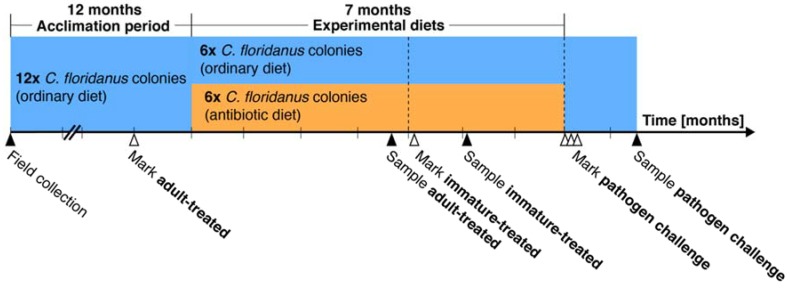Figure 1.
Timeline of the study, including onset and end of the experimental diet treatments and collection of ants for experimental assays. Colonies were provided with an ordinary diet (blue) for one year to acclimate to laboratory conditions and then fed an ordinary or antibiotic (orange) diet for seven months. Marking (white arrows) of adult ants prior to, and newly eclosed ants four months into the experimental diet treatment enabled creation of two colour-coded developmental groups: ants only receiving the experimental diet as adults (adult-treated) and ants receiving the experimental diets through the immature stages (from egg or larvae; immature-treated). Ants from these two age-controlled developmental treatment groups were sampled (black arrows) for head width, melanisation, and/or survivorship assays. Dashed lines indicate when the colonies were censused.

